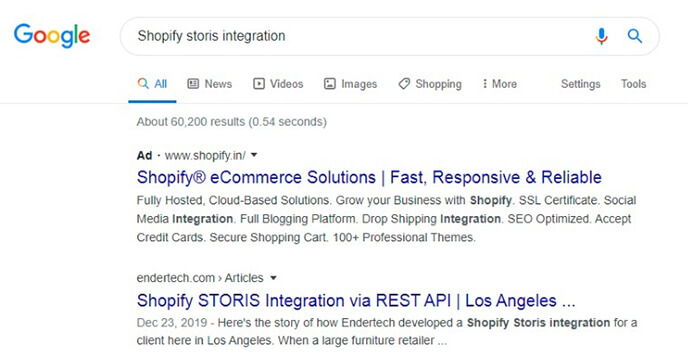Google established SERPs at the beginning of the 2000s. Now, after two decades, it has come a long way to provide an excellent user experience. Google does so by implementing a combination of algorithms that utilizes numerous ranking signals. A clear understanding of the search intent helps it deliver the best possible results to satisfy the user query.
Every entrepreneur who uses digital technology to build, launch, or grow their business strives to improve its Google rankings. With effective SEO techniques, a website can create an outstanding experience for the consumers, build their trust in the company, and rank higher on SERPs.
GoodFirms surveyed 100+ SEO professionals worldwide to uncover the enigma surrounding SEO and find out how to rank at the top of SERPs in the ever-evolving online marketplace.
The Importance of Web Traffic and How to Increase it
The ultimate goal of every website owner is to get a healthy flow of visitors and boost conversions. More traffic allows you to connect with potential clients and make them aware of your offerings.
There are six extensive methods of creating web traffic - organic, social, referral, paid search, email, and others(forums, direct, and display). Among these, organic search traffic provides a sustainable approach to bring in highly qualified prospects.
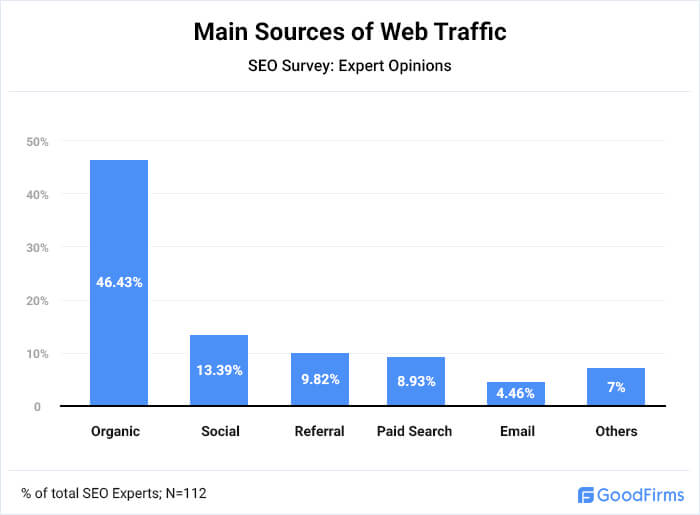
46.43% of the surveyed SEO experts rely on organic traffic, reiterating that it is the principal source that provides more authenticity to their site, builds user’s trust, and has several additional benefits too.
What can be done to increase organic search traffic? Effective content with a click-worthy topic is still the primary factor that determines the overall readability and visibility of your site. After all, it is the quality of your content and the website in general that prepares the base for excellent user experience.
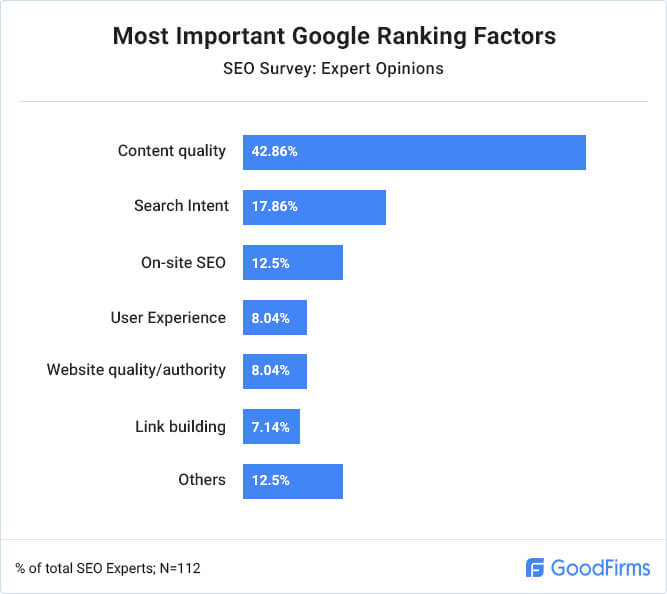
Let us find out the On-Page and Off-Page parameters that one needs to take care of for achieving optimum web traffic.
On-Page SEO
On-page SEO/on-site SEO is the practice of publishing relevant, high-quality content for users by optimizing headlines, HTML tags (title, meta, and header), images, internal links, and URLs.
Saurabh Jindal, Founder at Talk Travel, says, "It is necessary to establish a sturdy and solid on-site SEO for your product (even if it is a website, app, service, etc.) These include tasks such as proper title tags for your posts/pages, crawlability enablement for various search engines (for eg., including the sitemap), content with appropriate formatting and keywords, page speed, images with descriptions, and alt tags, etc."
The following are the elements of on-site SEO that combinedly govern the number of visitors for any website.
1. Content
Creating web content/blogging is a great way for sharing your interests and visualization to prospective customers, educating them, and promoting your business. However, knowing where to start can be difficult. A lot of research and refining ideas to perfection go hand in hand to carry out this endless procedure.
-
High-Quality Content
High-quality content sets your website apart from the masses. All the other components, such as design, visuals, videos, etc. provide a secondary support role. The best-written content starts by researching the proper market - determining high-value customers and defining personas for a website.
Write the content that is relevant, clear, keyword-rich, and targets and engages the right audience. Such content can guide users towards your offerings, which increases the chances of conversion. According to 42.86% of the surveyed SEO experts, content quality is the most important factor in ranking your blog in SERPs.
-
Create Niche Content
The content that you generate must be powerful enough - niche - to resonate with the targeted audience for driving sound results and having a better connection with them. With low volume keywords - search terms having a small search volume - you can have the opportunities to build interest around a new niche. When you target a wide variety of low-volume keywords at once, your content can rank for those targeted multiple keywords, multiplying your qualified traffic.
Pressing on the importance of the topic, Gabriel Richards, founder and CEO at Endertech insists that if you can write the *best* article on a niche topic, you have a good chance of getting seen. He gives an example about how they managed to get qualified traffic by targeting low search volume keywords(0-50).
"Recently, my company, Endertech, wrote an article about integrating Shopify with STORIS. Sure, everyone knows about Shopify, but STORIS is a relatively obscure ERP software for the furniture industry. And no one had written anything about integrating it with Shopify yet. So, after completing a project, we wrote that article, and lo and behold became the #1 organic result for "Shopify storis integration"... and on the first page for "Shopify storis" by themselves!"
-
Leverage the Power of Visual Content
Majority of users love visually-appealing and interactive content such as images, statistics, videos, infographics, etc. It certainly makes people stop scrolling and enables page dwell time that Google takes into consideration.
For leveraging media, Emrecan Şanlı, technical SEO specialist at Zety, advises that one of the best things is to go on podcasts as a guest to get server-crushing traffic to your site.
"It'll help you get lots of exposure, establish yourself as a thought leader and industry expert, all while magnetizing people to your site. As a cherry on top, the show's host will be happy to give you at least one backlink in the show notes, which should help send your Google rankings to the moon."
2. Effective Keyword Targeting
Keywords, one of the main elements of SEO, allow people; searching for the products, services, or information that you offer, to locate you. So, developing a list of keywords that are highly relevant to your audience is foundational for all your SEO efforts.
-
Types of Keywords
While, there are many types of keywords, such as – short-tail, long-tail, product defining, customer defining, geo-targeting, intent targeting, LSI keywords, Andy Johnson, Sr. SEO Specialist at Red Olive follows an interesting approach.
I break keywords into two groups: informative and converting. Informative keywords address the 'who, what, where,' etc. of the content. What is the content about, who is sharing the content, etc. Converting keywords include terms like 'cheap' or 'compare.' They are for site visitors further down the conversion pipeline and are focused on having visitors take action. Both are crucial in attracting the right audience, and including them in your posts is a must.
Founder of 'K9 of Mine', Meg Marrs, also considers SEO as a huge deal for them because over 80% of their traffic comes from Google. She says, "We target a lot of pre-purchase keywords (such as dog food reviews, dog food ratings, best dog food, etc.) and focus on providing readers with the information they need to make a purchasing decision."
Then there are low-hanging keywords that provide an efficient way to get maximum results with minimal effort as these terms are already ranking well and are within reach.
According to Dylan Gordon, Content Marketer and Founder of FunnelWays,
Ranking for long-tail keywords and low hanging fruit is a really good strategy even in 2020 because there simply isn't enough quality content for the first page!
-
Keyword Mapping
It is the process of assigning keywords to particular pages on a website by performing keyword research. Keyword mapping enables you to set up a plan and ensures that your pages do not work against one another and your efforts do not get wasted.
A firm advocate of keyword mapping for improving SEO, Boyd Norwood, VP of Marketing at Nozzle Corp., explains, "The most crucial thing is to map each keyword to a URL that you want to rank for that keyword. This keyword map will guide all your on-site optimization efforts, including which keywords to use in a page's title tag, description, alt text, content, and internal links. The map also tells you which keyword to use as the anchor text in your link building efforts."
-
Keyword Tracking
Keyword tracking - monitoring a specific set of keywords on an ongoing basis with the help of software - can provide you valuable information on how you are doing for those keywords.
But Mason Stout, the SEO Specialist at SeniorLeaf, is of the opinion that it should not be your most looked at metric as search results vary wildly based on location, and a ranking tool doesn't always show that.
"If you are looking at aggregate ranking changes, this may inflate your results. For instance, I might have a keyword move from position 50 to 30, which would show me a +20 gain. I may also have a keyword go from numbers 1 to 5, which would show a -4 loss. Together this may show a net gain of +16, which seems great, but in reality, I'm losing way more traffic for the keyword that dropped than I'm gaining from the keyword that increased."
In a nutshell, we can say that never the one to go obsolete; keywords play a significant role for on-page SEO.
3. Optimize Meta Tags
Meta tags are snippets of text describing a web page’s content. They are written on a page’s source code, and they help search engines to determine what a web page is about. Meta tags can be used by the browsers, too, to judge how to display content or reload the page.
Once you have zeroed in on a topic, information, question, and solution and have produced an excellent content, the strategist at Morey Creative Studios, Joseph Whearty, suggests optimizing the elements that searchers see in the SERPs.
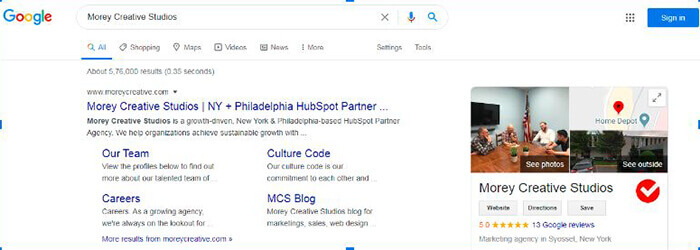
"Have an organized URL, a clear title as well as meta description that precisely conveys what readers should anticipate finding on the web page and the value it will offer, and (depending on what Google includes in the SERPs at a given time) an attractive favicon. If all those convey that your site is professional and will have the answers they're looking for, the traffic should come – and grow!"
4. Great User Experience
Eventually, it is the user who decides whether your SEO efforts have succeeded or not. Google has indicated that site speed and user-friendly navigation are the signals it takes into account when ranking the pages. This is where technical SEO comes into the picture.
Optimizing your website's infrastructure for the crawling and indexing phase will help search engines access, crawl, interpret, and index your site without any problems.
-
Importance of Page Loading Speed
Page loading speed has become more essential now as Google has adopted mobile-first indexing, and undoubtedly, people use smartphones quite often. In addition to negatively affecting your indexation with slow crawl speed, it stains user experience, increases bounce rates and reduces conversions. Each second counts when the user wants to load your website as quickly as possible.
To help better understand how Google is handling sites that load slowly, Jake Fisher, president at Bridges Strategies & Digital Marketing, ran an experiment last year on a travel blog. They found it difficult to comprehend an anomaly in their Google Analytics reports and general website traffic and hence different desktop/mobile/tablet ratio. He says,
"To execute the experiment, we used a new iPhone, an iPhone 6, and a Kindle Fire. We also used a fast WIFI connection, an LTE connection, a 3G connection, and a 2G connection. Then, we tried making the same search from the various devices and on the various connections."
He further adds,
It turns out that we were right. On 2G connections (for all devices) and on the Kindle Fire, our page, which was ranking #1 on faster devices and connections, wasn't even appearing in the top 100 results. It was completely disqualified. We made technical fixes to the site that sped it up into the low 90s on the Google Pagespeed Insights Tool and then watched what happened. Organic traffic to that page immediately tripled due to mobile traffic! The desktop/mobile/tablet ratio went to normal.
-
User Friendly Navigation
User navigation is a key component, standing between the acquisition and conversion, so it directly impacts a website owner from a marketing and business perspective.
The navigation should
- Offer users to choose from a limited selection of pages to visit
- Provide clear labels to the pages where navigation tabs take them
- Enable them to search
- Adapt site according to visitor’s needs
- Have user-friendly language
Off-Page SEO
Off-page SEO/Off-site SEO incorporates efforts taken for creating trust, building your brand and improving SERPs ultimately. To rely on the merit of your content alone is not an effective ranking strategy. Let us find out the contribution of various off-site SEO elements in generating website traffic.
Backlinks
Backlinks, perhaps the most critical part of off-page SEO is a remarkable factor to the health and strength of your website too. A website's domain and page authorities, which directly contribute to search result rankings, is built with the help of backlinks.
There are specific methods to earn and build backlinks -
- Publishing 'Skyscraper' Content
- Outreach for Backlinks
- Guest Posts
- Influencer Marketing
- Link Bait
Let us understand how all these methods work.
-
Publishing 'Skyscraper' Content
With the skyscraper technique, you start by researching popular topics, trends, and already well-acclaimed pieces of existing content related to your scope of business. Then, you derive unique ways to create far superior content that communicates a similar message.
Brian Barwig, Digital Marketing Manager at Integrate Digital Marketing, expresses, "I like to write articles with the skyscraper technique - finding the best articles on the current subject you are writing and making your page better by adding more in-depth content, links, photos. Once you have the piece complete, reach out to the right people in the industry, and have them promote or link to the piece. Adding media (photos, videos, other graphics) is good for breaking up the content a bit, so users don't see a wall of text and become overwhelmed."
This technique has the potential to yield better results as you are dealing with a primed audience, the topics are already in demand, and there is a significant chance of favorable SERP.
-
Outreach for Backlinks
Outreach is a proactive way of acquiring backlinks to your website by contacting other site owners, who are relevant to your website but are not direct competitors. This process can involve any mode of communication, but it generally happens via email and Twitter.
Finding it a flourishing task when carried out the right way, Tieece Gordon, Search Engine Marketer at Kumo talks about email outreaching,
"Successful outreach takes effort. By taking the time to analyze the sites you want to reach and personalizing your emails to their contacts, you can find real opportunity and value beyond a single backlink, such as partnerships and collaborations."
Keeon Yazdani, Chief Marketing Officer at WE R CBD, uses the Moz SEO software to track which websites their competitors are receiving backlinks from. Then he exports the website to an excel spreadsheet to find if the site meets their quality criteria for the factors - domain authority, page authority, the number of keywords the website ranks for, and the amount of traffic the site receives.
"We will then reach out to the list of websites on our spreadsheet to see if they're willing to accept guest blog submissions. If so, we will write a quality piece of content that fits the audience of the publishing website. We will include relevant backlinks within the blog post and a backlink to one of our blog posts or web pages."
-
Crafting Guest Blogs for Natural Link Building
Guest posting - writing and publishing content on some high-authority's website or blog – allows you to enter an already-established community, share your message, connect with a new audience, and generate a link for your site. This certainly benefits you when done in the right manner.
An analyst, Daniel K Cheung, advises against getting links from low-quality websites that link out to pretty much anyone willing to pay an 'admin' fee. He says, "What I have observed is that guest posting has lost effectiveness. Every marketer, affiliate site owner, and their VAs rely on guest posts to acquire new referring domains.
I'm not saying guest posts don't work. Rather, the target site and the content need to be extremely high quality, which usually means investing significant time (and money) to build a relationship with a real person. The biggest wins in SEO require sweat equity - quick wins have really lost their weight."
-
Influencer Marketing
Influencer marketing is a strategy that businesses employ for promoting their products and services by collaborating with leading social media users or bloggers. Influencers generally have a larger market and engaged audience that can make your brand reach to build credibility and even drive sales. When influencers share your link, their followers might come to your site and you can easily measure the conversions with link tracking tools. With increased popularity, there’s a probability for higher-authority domains to pick up on it and add it to their website.
-
Link Bait
A disputable method to attract backlinks is link bait - the process of creating content that includes controversial information, data, guides, and newsworthy pieces. Experts often debate between the positives and negatives associated with link bait, and depending upon the direction that you take, it will present risks or rewards. The point one should keep in mind here is - to stay clear of the backlinks that can potentially hurt your rankings.
About 7.14% of the surveyed SEO experts believe that the importance of having high-quality link building is not going to change in the near future. They find it essential to promote the expertise of the company and to thrive online.
Important Points to Consider for SEO Ranking
Mentioned below are certain points which are necessary to contemplate for ranking high on Google SERPs.
1. Identify the Search Intent
Search intent is the motive of a person behind a query. It's about determining why the person is doing this search and whether they want to learn or purchase something. Or are they looking for any transaction or any place to visit?
The success of Google as a business relies on providing users with the most relevant results for their queries. This is why Quentin Aisbett, Founder at OnQ Marketing, suggests dwelling on certain basic things before deciding on SEO techniques.
"From a general point of view, it's perhaps more important to ask yourself why you believe your website should rank ahead of your competitors for a range of search terms. Do you present yourself as the most authoritative in the industry or the one with the most experience? Can you demonstrate that your customers received great service? Are you really satisfying the searcher's intent?"
Tristan James, Head of SEO Agency at Assisted, suggests using Google Trends to know the 'popularity' of what you are preparing to write. He says, "Traffic sources broadly depend on the market (country) you're in. Across most of the world, Google has a huge market share (above 90% in most markets), but there are some markets (Russia, China, South Korea) where there are other Search Engines to consider (Yandex, Baidu)."
With Google's machine learning algorithm – BERT, the search engine can better understand queries and content on the page. So, unless your content is on par with the search intent, there is no point in just churning it out.
2. Lead Generation Optimization
The lead generation process starts when a user clicks on a call-to-action located on one of your blog posts or web pages. It leads them to a landing page, which might have a form to collect the visitor's contact information. Once the user fills the form and submits it, they are led to a thank-you page.
Cory Hedgepeth, the founder of Content Marketing Cory, is a staunch supporter of lead generation optimization. He advises that every drop of traffic that flows into your site should be exposed to lead generation through newsletter opportunities.
He says, "The more you build leads, the larger your newsletter list, the more traffic you build. You become self-sustaining. It's difficult to tell you how often I see sites excluding lead generation forms. Some don't understand lead generation while others are afraid it will harm their future SEO. The latter isn't true, given you do things intelligently and don't become overly greedy."
3. White Hat SEO v/s Black Hat SEO
Both white hat and black hat SEO techniques aim to create good results for a website in the search engines. But they are opposite in the characteristics and the mode of operation.
White hat strategies follow ethical, technical, and aesthetic practices, abiding by the rules of search engines. In contrast, the black hat is a set of illegal or unethical practices that involve taking advantage of limitations or blind spots in the algorithms.
Marko Maric, SEO Director at Clockify, is not the one to follow black hat practices ever. He says, "The vast majority of traffic to our site comes from search engine results pages. Over the period of a couple of years that our site exists, we have managed to make our brand one of the most recognizable in our business niche. We did this by implementing good branding practices and through white hat search engine optimization."
4. E-A-T and YMYL
SEO experts suggest following E-A-T - an acronym for Expertise, Authoritativeness, and Trustworthiness. It helps build credibility and lets Google know that you are a formal expert and authorized in your field. Ever since Google's Search Quality Evaluator Guidelines included E-A-T as a consideration factor, there is an ongoing debate over the importance of E-A-T. Despite not being a direct ranking factor, it can still give you more traffic, increase conversion rates and revenue and can even help you rank higher.
Bart Turczynski, SEO/Content Manager at ResumeLab, also advises putting the best efforts to maximize the E-A-T score.
"You can utilize several levers to make your on-site efforts productive. However, off-site SEO should not be discounted. Without the proper amount of backlinks (ideally of high quality), you'll never make it to the first page or reach the pinnacle of your SERPs."
So, to skyrocket your rankings and boost your number of monthly visitors from organic search, you need to employ top SEO techniques.
Google puts an additional layer of scrutiny on the sites falling into the YMYL(Your Money or Your Life) category, such as legal, finance, medical, and healthcare sectors. In the cases where the website is not secure, the privacy policy is not maintained, articles are not written by experts, found involved in linkbait, malpractice, or litigation, Google can lower the website’s score or even terminate them.
That is why Tristan James advises to double down on detail, accuracy and supporting information when you are writing for the YMYL industries.
Domain Authority
Developed by SEO consulting firm Moz, domain authority is a remarkable ranking factor that works with Google's algorithm - PageRank and helps to determine where your website stands on SERPs. Every site is scaled and given a rank from 1 to 100, with a brand-new website starting with a score of 1, gradually climbing its way up based on authenticity.
Salva Jovells, marketing manager at Hockerty, has 8 different domains(including regional ones) with different DAs. He confirms it is clear to see the difference of having a lower domain authority or domain reputation on their .uk v/s the .com. Talking about DA and backlinking, he explains,
We have found that when searching for websites to link to you, it is very powerful that the selected website is the closest to your website in terms of semantic. A DA: 80 website not related to your topic will bring you less juice/power/call it the way you want, than a DA: 40 website very related to the topics or niche your website is about.
Mathew Peranick, the partner in 420interactive, has the experience of taking old sites with age and authority and flipping them to expand the on-page content and optimize website structure. He asserts that one can outrank a high domain authority website for a topic if their website is extremely focused on a specific topic.
He says, "That's because expertise/trust is a very relevant ranking factor, and that can be signaled to search engines by domain authority, as well as focus. As an example, if Forbes wrote an article about the best coffee grind, they can rank well. But if a small coffee blog with 50+ posts all specifically about coffee wrote a post too, it could handily outrank Forbes."
Though domain authority gives a good starting point for understanding how a website is doing, a lot of information Google gives is indistinct and open to interpretation, so one cannot rely on DA alone.
Get Ranked in Featured Snippets
Also known as 'zero-click' or 'no-click' searches or 'position zero,' featured snippets provide users with a concise, direct answer to their questions. They are placed on top of Google's organic results and below the ads in a box.
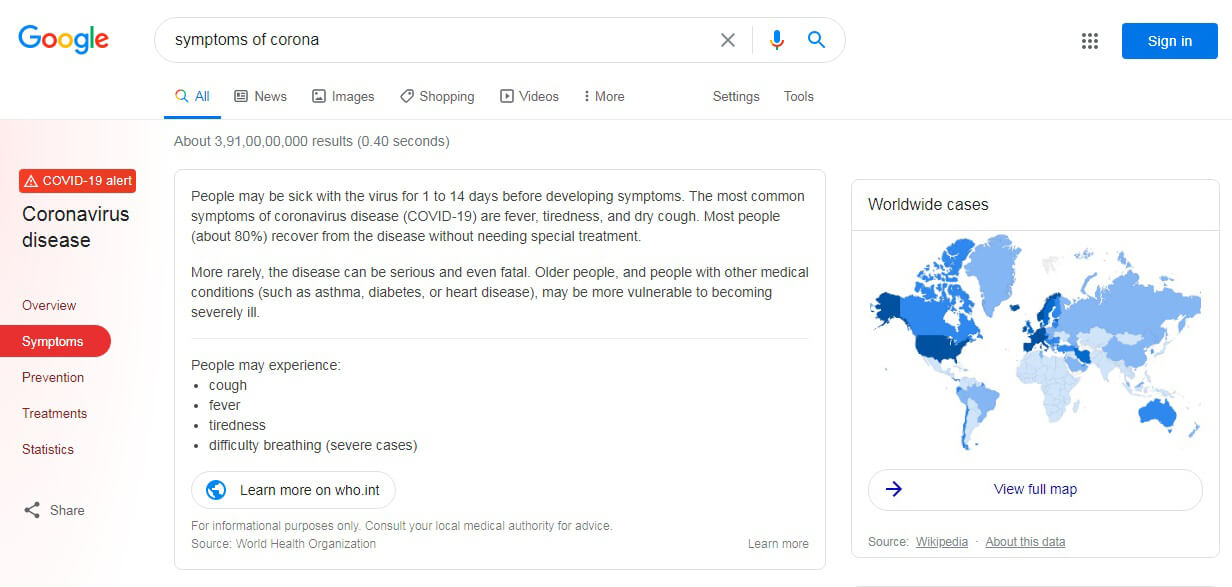
An optimized, well-researched, and unique content backed by search intent can be appropriately indexed and displayed within featured snippets.
Joe Goldstein, director of SEO & Operations at Contractor Calls, believes featured snippets generally drive more traffic than a standard link in the same position. He says, "The question is how relevant the format is for your target market. For example, featured snippets are a great way to target a local audience if they are explicitly about local topics and interests."
One needs to be careful here because if the user finds out what he is looking for in the featured snippets, he might not even care to explore your site. Due to search termination, there is a high probability of a reduced click-through rate.
SERPs Tracking Tools
By using SERPs tracking tools, you can take actionable steps from the keywords you track and correlate marketing efforts with your keyword data. You can also stay aware of the competition to understand whether your content needs an upgrade to stay ahead or not.
Many SERPs tracking tools are available in the market, but the most popular ones are Ahrefs, SEMrush, Google Search Console, Google Analytics, Moz, Ubersuggest, Screaming Frog, Buzzsumo, etc.
Around 41.07% of the surveyed SEO experts swear by the effectiveness of Ahrefs for a faster and accurate website analysis report, and 34.82% find SEMrush essential because of its Link Building tool and other useful insights.

Muhammad Farasat Khan, the SEO Specialist at IsItWP, says, "I have been using a lot of tools to grow my traffic and uncover competitor strategies. However, Ahrefs is my Swiss army knife, because it is not only an SEO suite but provides great insights to utilizing their features to the very best, by reading their blog section."
Toni JV, SEO Consultant & Founder of JVT Media, depends on Google Search Console because it allows one to see the individual pages' CTR (click-through-rate) and rankings. He says, "You can then take this information and keep optimizing your title tags etc. to get higher click-through-rates, or maybe even change the title tag completely because you noticed you got a ton more impressions and clicks from another keyword than the one you tried to rank for."
Apart from the above mentioned ones, there are several other tracking tools available in the market such as WordPress SEO by Yoast, Google My Business Page, Mangools, etc.
Internal Linking for SEO
Content needs links for getting ranked. Google finds your web pages and posts to be best when they are linked to from somewhere on the web. Internal linking establishes a hierarchy on your site, giving Google an idea of its structure. Use the right internal linking strategy to have high SEO rankings. Provide the most valuable pages of your site with more link value than other less important ones.
Corey Trojanowski, Director of Digital Strategy at Valve+Meter Performance Marketing, gives an example about how to get organic traffic from building a content strategy around keywords that are highly searched within your industry and, in some cases, the markets you serve.
He says, "If I were a plumber in Wichita, KS, I would have individual pages dedicated to each of the plumbing services I perform (drain cleaning, leak detection, fixture installation, and so on). Then I would find similar topics related to my services to create blog topics on and internally link to my service pages. For example, I would write a topic on How to Snake My Own Drain and link to my drain cleaning service page from it."
Conclusion
In this article, we have talked about Google, but everything we have discussed more or less applies to other search engines as well. Your target audience might be using them, so you can rope in more traffic and new customers by optimizing your website beyond Google.
With the digital world being volatile and revolutionary, neither the search intent nor the SERP features displayed in search results are going to remain the same. But by being at the top in digital marketing, businesses can undoubtedly compete in the modern economy.
To cut a long story short – keep producing the well-optimized content, revisit the content from time to time, make updates whenever necessary, keep an eye on Google's updates, analyze your and your competitor's rankings. And most importantly, write for the user! Because if you do so, your website will certainly be rewarded by search engines too!
